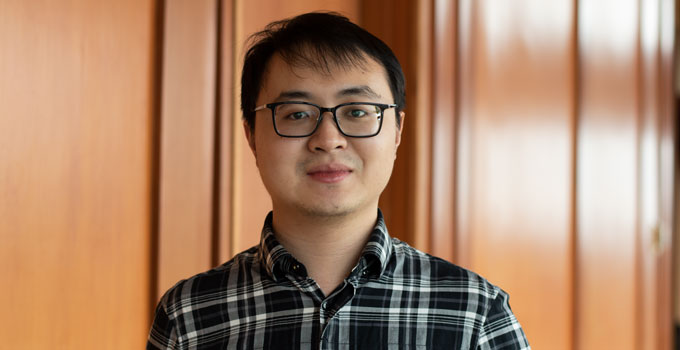
OICR’s Dr. Shimin Shuai and Pan-Cancer Project collaborators identify new cancer-causing mutations in the non-coding region of the cancer genome
Cancer begins with a ‘driver’ mutation – a DNA abnormality that may cause mutations to accumulate and give rise to the disease. These mutations are key targets for cancer therapies but most research to date has focused on the driver mutations within a small portion of the genome – the one per cent of our DNA that codes for proteins.
Now, researchers from the Pan-Cancer Project have explored the other 99 per cent.
In their paper, published today in Nature, the research team detailed a new set of potential driver mutations within the vast non-coding regions of the human genome. These driver mutations could point to new therapeutic approaches or new ways to personalize cancer treatment decisions in the future. The group’s analysis confirms previously reported drivers and raises doubts about others.
It’s amazing that we can use computational tools and algorithms to find important clues that direct us towards a future where precision medicine is a reality.
– Dr. Shimin Shuai
“We looked into the whole genomes of nearly 2,600 patients and some samples had tens of thousands of mutations,” says Dr. Shimin Shuai, leader of OICR’s contribution to the Pan-Cancer Project driver working group. “Driver mutations are really rare in the non-coding regions of the genome so we needed to design computational tools to find a needle in a haystack.”
A key tool behind these discoveries was a computational algorithm called DriverPower, developed by Shuai under the supervision of Dr. Lincoln Stein, Head of Adaptive Oncology at OICR. DriverPower, as described in a complementary publication in Nature Communications, can help differentiate driver mutations from other ‘passenger’ mutations across whole genomes.
“We now have a remarkably powerful computational tool for future driver discovery,” says Shuai, who is the first author of the Nature Communications publication. “It’s amazing that we can use computational tools and algorithms to find important clues that direct us towards a future where precision medicine is a reality.”
DriverPower identified nearly 100 potential driver mutations which will be evaluated in future studies. As more whole genome sequencing data are collected in the future, DriverPower will continue to be used for driver discovery.
“The findings we have shared with the world today are the culmination of an unparalleled, decade-long collaboration that explored the entire cancer genome,” says Stein. “With the knowledge we have gained about the origins and evolution of tumours, we can develop new tools and therapies to detect cancer earlier, develop more targeted therapies and treat patients more successfully.”
This work was part of the Pan-cancer Analysis of Whole Genomes Project (known as the Pan-Cancer Project or PCAWG), which was led in part by OICR.
Related links
- Unprecedented exploration generates most comprehensive map of cancer genomes charted to date
- New clues to cancer in the genome’s other 99 per cent
- AI algorithm classifies cancer types better than experts
- Whole-genome analysis generates new insights into viruses involved in cancer
- Dr. Lincoln Stein talks about the Pan-Cancer Project
- Unraveling the story behind the cancers we can’t explain
- TrackSig: Unlocking the history of cancer
- Discovering cancer’s vulnerabilities: The whole may be greater than the sum of its parts
- New tumour-driving mutations discovered in the under-explored regions of the cancer genome
